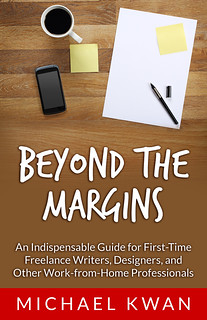Ultimately, you want to be in a position where you can start building up an equity, so you can retire. The debate has been out for ages as to whether it’s better to pay down your debt and then save, or to do both at the same time. For the most part, the most intuitive plan of action is to focus on paying your debt down, because of that yucky feeling that comes with the word “debt.” To settle this once and for all (at least for the people who read this), I thought it’d be fun to do a few illustrations to show which scenario would actually come out on top.
Let’s Make a Few Assumptions
Let’s set the scene. Our friend, Mr. Crazy Spender, has built up credit card debt of $10,000 at 20% interest. He makes average money, but after paying rent and such, he has $400 to spend on paying the credit card down.
Paying Down the Debt First
Paying $400 a month, your debt of $10,000 will be paid down in 33 months. Once that’s paid down, that $400 can go straight into an RRSP with an 8% rate of return. In 7 years of this, you’ll have built up a capital of $27,867.
Saving and Paying the Debt at the Same Time
Let’s assume that you’ve been persuaded by a financial advisor to do what seems really counter-intuitive and not to focus on paying down the debt, but to pay it down at the same time as saving money. Putting $350 to pay down the debt, it’ll be completely paid off in 40 months. During this time, putting $50 a month into an RRSP from day one for those 4 years, and $400 a month in the last 6, at an 8% rate of return, you end up with a capital of $29,160.
So What’s Your Take?
It’s not as obvious as most would’ve thought. However when you look at investing, the a little bit of money with more time will always win over more money with less time. Like any financial strategy, it all comes down to what’s important to you.
If you can’t shake that feeling of debt, then by all means pay it down. If you want the security of having liquidity in the event of an emergency, then do a bit of both. In any case, the ultimate goal is to get you into a financial position to break free from the shackles of debt.
Aaron Koo is a passionate networker and entrepreneur who gets people out of that “someday” mentality about understanding their finances.






To me, paying down is the most important thing. That is even to the point of not spending on anything else expect the absolute necessities to live on. The quicker you get to even, the more time you have to save and the less stress you place on your body mentally.
Interesting. What is it about debt that causes physical and mental stress for you?
In response to your question, the answer is, it depends. Simply asking for more debt, even if it’s to pay off existing debt will ding your credit score.
If the new debt can’t fully pay off the old one then you might be in a LOT of trouble.
I would only recommend doing that if the new debt has a large enough account to completely clear the old one and that they terminate the old account the moment it’s paid off. With two sources of debt, for many people the temptation is too great.
It’s not that it does it to me, but the wear on the mind because of always wondering how you are going to pay the bills is what places the stress on your mind, which in turn places it on your body.
Whether it’s paying down the debt, or paying and saving at the same time, we should have the financial discipline to spend within our means.
If we can exercise that kind of discipline, then we wouldn’t have built up credit card debt in the first place.
I fully agree with that. I would also add that for many people, the stress of being in debt is the wake up call they need to learn about being disciplined.
Sorry, this is a diversion…
Where do you think the Arabian Desert or Arabian desert is? In Egypt or the Arabian Peninsula?
Credit card kills a lot of people with the high interest. Invest or not, really depends on whether the interest from debt is higher, or your investment return is higher.
Putting money in investment with 5-6% yield vs clearing the amount of debts… I would definitely go with clearing debts first.
In this example I used 20% interest on the credit card which in most cases, is the highest most people see.
In the case of loans and mortgages the numbers would be even higher.
Aaron, what are your thoughts on looking for the best deals in a credit card to transfer your debt for lower interest and flipping it quarterly into another lower one if you can find it to save some interest while you pay down your debt.
What’s important to you about paying down the debt first?
Paying down the debt is the great thing for me. Thanks for sharing this informative article.
What’s important to you about paying down debt?
Great article about debt. This is very informative post and interesting too. Thanks for sharing with us.